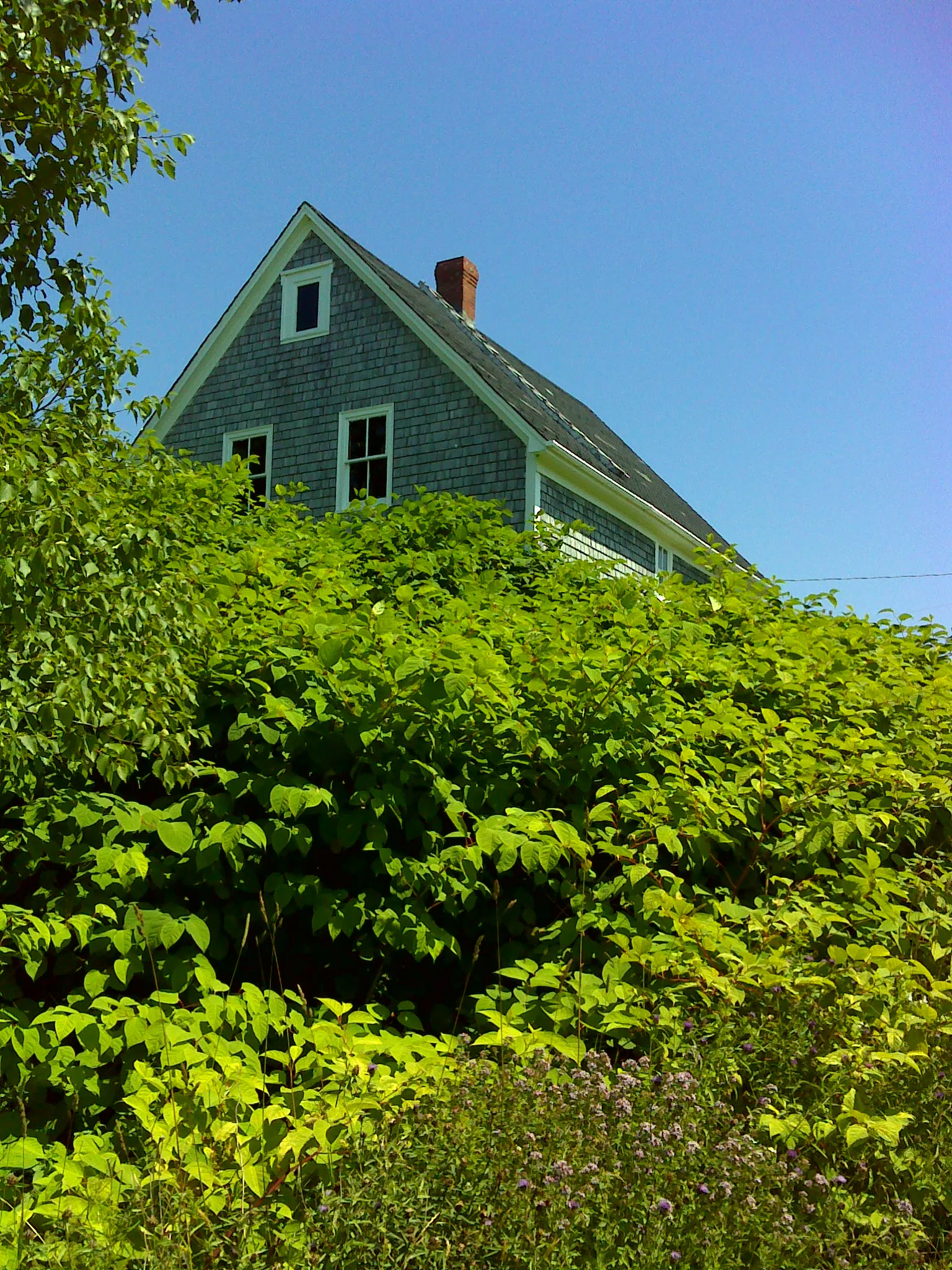Many Canadians are itching to get outdoors after weeks of COVID-19 self-isolation and a lengthy winter. Some are able to in provinces where restrictions have been lifted, while others remain close to home.
The Nature Conservancy of Canada (NCC) and the Canadian Council on Invasive Species is marking Invasive Species Awareness Week by urging people to help minimize the spread of invasive species, whether they are resuming recreational activities or spending time in their yard.
NCC senior conservation biologist, Dan Kraus, suggests that with more of us spending time at home and taking short walks in local parks, now is an ideal time to identify and report invasive plants in our communities.
“Globally, invasive species have been identified as the number two threat to nature, with habitat loss being the primary issue,” said Kraus. “Invasive species not only threaten our Canadian plants and animals, but also impact our economy and well-being. For example, Japanese knotweed and European common reed can lower property values, and emerald ash borer is a major pest in our forests. Invasive species cost us billions of dollars each year and are altering the character and functions of many Canadian ecosystems.
Spring is also an ideal time to audit your backyard for invasive species. While many non-native plants are not an issue for biodiversity, there are several that are known to spread from backyards into nearby natural areas. Property owners can play an important role in reducing the spread of these species by removing them from their gardens.
“Like COVID-19, invasive species are spread by the everyday things we participate in,” says Barry Gibbs, Executive Director of the Canadian Council on Invasive Species. “As we have seen, by making changes in our behaviour, we can have a major impact on the spread. Many invasive plants have been unintentionally introduced by gardeners. You can change that! Check to make sure you are not planting invasive plants. Remove the invasive species on your property. And report any invasive species you see away from your property. Each of us can take action and make a difference”.
People can help by reporting sightings which contributes to early detection. Canadians of all ages and levels of experience can join in the effort to stem the spread of invasive species by downloading the iNaturalist phone app (iNaturalist.ca) and uploading photos to help scientists and government agencies identify the species and monitor their spread.
Many invasive species, such as the emerald ash borer beetle, have few natural predators to control them. Once they get into ecosystems, they’re often able to rapidly spread and can negatively impact our native plants and animals.
A list of invasive plants and species that could be in your backyard or local community can be viewed below.
Common invasive species people might find in their backyard or local park
Emerald ash borer: This non-native invasive beetle has decimated tens of millions of ash trees and continues to spread rapidly. It can quickly kill large areas of ash trees, impacting forests, areas along streams and rivers, and urban forests and woodlands. It has spread to new areas where people have moved firewood that has been cut from infected ash trees.
Where it’s found: Manitoba, Ontario, Quebec, Nova Scotia, New Brunswick.
Leafy spurge
This plant has yellow-greenish flowers, and its leaves and stems have a white, milky sap. It probably came to Canada in grain seeds from Europe. It spreads quickly in open areas and threatens habitats, such as tall grass prairie in Manitoba. In Saskatchewan, beetles have been introduced to the area as a biological control.
Where it’s found: Yukon, BC, Alberta, Saskatchewan, Manitoba, Ontario, Quebec, New Brunswick, Nova Scotia, PEI.
Japanese knotweed
It resembles bamboo and was likely introduced as a garden plant, but Japanese knotweed can form dense thickets and outcompete native vegetation. It’s particularly a problem where it takes over the edges of creeks and lakes. It’s been identified by the International Union for Conservation of Nature as one of the world’s worst invading species.
Where it’s found: BC, Alberta, Ontario, Manitoba, Ontario, Quebec, New Brunswick, Nova Scotia, PEI, Newfoundland and Labrador.

Garlic mustard
Native to Europe, this green-leafed herb with white flowers was first recorded in New York in 1868 and may have been brought over as a culinary plant. It spreads through forests and displaces native wildflowers and tree seedlings. Each plant produces thousands of tiny, black seeds that are viable in soil for many years. The only bright spot: The leaves can be picked and turned into a tasty pesto.
Where it’s found: BC, Alberta, Ontario, Quebec, New Brunswick, Nova Scotia, PEI.
Buckthorn
There are two kinds of this shrub — glossy false buckthorn and common — which have berry-like fruits that produce large number of seeds. They were introduced in the late 1800s primarily to create windbreaks along farm fields. Unfortunately, the plant spreads quickly and prevents native trees and shrubs from regenerating. Common buckthorn is also the primary host for the non-native soybean aphid, a serious threat to farmers.
Where it’s found: Alberta, Saskatchewan, Manitoba, Ontario, Quebec, New Brunswick, Nova Scotia, PEI.
Common tansy
This plant with yellow, button-like flowers can grow as tall as 1.5 metres. It was introduced to North America from Europe in the 1600s as a horticultural and medicinal plant. It impacts stream banks and native grasslands and outcompetes native plants. It also produces a toxic compound that can impact cattle and wildlife.
Where it’s found: Everywhere except Nunavut.
European swallow-wort/dog-strangling vine
This vine can grow up to two metres long and create dense thickets or grow on other plants. Monarchs have been known to confuse the plants with their milkweed host plant and lay eggs on it, but the larvae can not survive. The plant invades forests, stream banks, grasslands and alvar habitats (limestone plain). A moth from the Ukraine area that feeds on the leaves has been approved for release in North America as a biological control.
Where it’s found: BC, Ontario, Quebec, New Brunswick.
Purple loosestrife
This plant is listed as a noxious weed in many provinces but is still sometime sold as an ornamental plant. But before adding it to your garden, you should know it crowds out most native vegetation and creates near-monocultures. It has also been identified by the International Union for Conservation of Nature as one of the world’s worst invading species, because a single purple loosestrife plant can produce over 2 million seeds each year.
Where it’s found: BC, Alberta, Saskatchewan, Manitoba, Ontario, Quebec, New Brunswick, Nova Scotia, PEI, Newfoundland and Labrador.









Comments